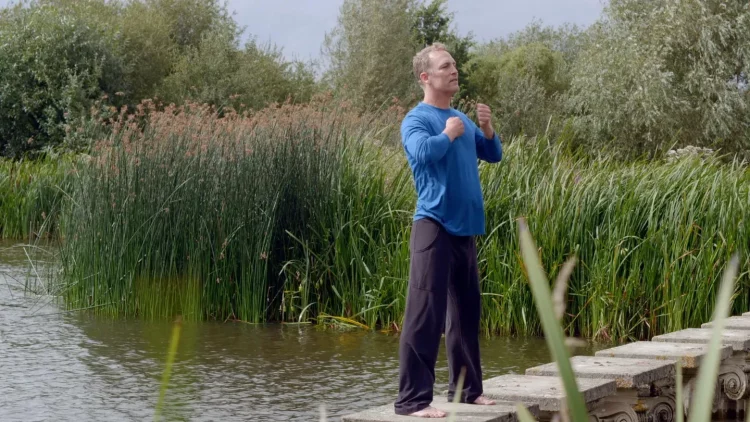Introduction: The Ancient Art of Acupressure and Modern Wellness
Acupressure, an age-old healing practice rooted in traditional Eastern medicine, has gained renewed attention as a holistic approach to balancing mental and physical energy. This manual therapy involves applying gentle pressure to specific points on the body, stimulating the flow of vital energy, or “Qi” (pronounced “chee”), through pathways known as meridians. Unlike acupuncture, acupressure uses fingertips or hands instead of needles, making it accessible for self-care and daily stress management. This article explores the origins of acupressure, its underlying philosophy, and practical self-applied techniques to alleviate anxiety, combat fatigue, and enhance focus, supported by both traditional wisdom and contemporary research.
Foundations of Acupressure in Eastern Medicine
Acupressure stems from Traditional Chinese Medicine (TCM), a comprehensive medical system developed over thousands of years. TCM is based on the concept that health depends on the harmonious flow of Qi through the body’s meridian network. Disruptions or blockages in Qi flow are believed to cause physical ailments and emotional imbalances.
In TCM, the body is viewed as an integrated whole where mental, emotional, and physical health are interconnected. Acupressure targets specific acupoints along the meridians to restore balance, unblock energy pathways, and stimulate the body’s innate healing mechanisms. The practice shares roots with acupuncture, reflexology, and shiatsu, all of which emphasize pressure application to influence physiological function.
How Acupressure Influences Mental and Physical Energy
Modern science offers insights into how acupressure may exert its effects. When pressure is applied to acupoints, it activates mechanoreceptors and nerve endings in the skin and muscles, sending signals to the central nervous system. This stimulation can trigger the release of neurochemicals such as endorphins, serotonin, and dopamine, which promote relaxation and improve mood.
Acupressure also modulates the autonomic nervous system, encouraging parasympathetic activity responsible for rest and digestion, while dampening the overactive sympathetic “fight or flight” response often linked to anxiety and stress. By calming the nervous system, acupressure helps restore mental clarity, reduce fatigue, and balance emotional states.
Additionally, acupressure can improve circulation and lymphatic flow, enhancing oxygen and nutrient delivery to tissues and facilitating detoxification. This physiological support boosts physical energy and endurance.
Self-Applied Acupressure Techniques for Anxiety Relief
Anxiety, characterized by excessive worry, nervousness, and physiological tension, is one of the most common reasons people seek natural remedies. Several acupoints have traditionally been used to ease anxiety symptoms:
- Yintang (Third Eye Point): Located between the eyebrows, pressing gently here promotes calmness and reduces nervous tension. Apply steady pressure with your index finger for 1–2 minutes while taking slow breaths.
- Shen Men (Spirit Gate): Found on the wrist crease on the pinky side, this point is known to soothe anxiety and insomnia. Use the thumb of the opposite hand to press and massage gently.
- Neiguan (Inner Gate): Located about three finger-widths from the wrist crease between the two tendons on the inner forearm, this point helps relieve nausea and anxiety. Apply moderate pressure for 2–3 minutes.

Practicing mindful breathing in combination with acupressure enhances relaxation effects. Regular daily sessions can reduce the intensity and frequency of anxious episodes.
Combating Fatigue with Targeted Acupressure
Physical and mental fatigue often coexist, impacting productivity and quality of life. Acupressure offers energizing points that can invigorate the body and sharpen focus:
- Zusanli (Stomach 36): Situated four finger-widths below the kneecap and one finger-width lateral to the shinbone, this point is celebrated for boosting stamina and overall vitality. Press firmly for 1–2 minutes on each leg.
- Bai Hui (Hundred Meetings): Located at the crown of the head, this point helps replenish energy and improve mental alertness. Apply gentle circular pressure using fingertips.
- Tai Chong (Liver 3): Found on the foot between the first and second toe, this point relieves stress-related fatigue and promotes emotional balance. Use your thumb to apply steady pressure for 1–2 minutes.
Acupressure on these points combined with stretching and hydration can help alleviate exhaustion and sustain energy levels throughout the day.
Enhancing Focus and Cognitive Function through Acupressure
Mental clarity and concentration are critical in today’s fast-paced environment. Acupressure supports cognitive function by improving cerebral blood flow and calming overstimulated neural circuits.
Key points for focus include:
- Yintang (Third Eye Point): Beyond anxiety relief, this point sharpens attention and clears mental fog.
- Si Shen Cong (Four Alert Spirit Points): Four points arranged around the crown, approximately one inch from Bai Hui, are used to enhance memory and concentration. Press each point gently in turn.
- Hegu (Large Intestine 4): Located between the thumb and index finger, this versatile point relieves headaches and mental fatigue. Apply firm pressure with the thumb for 1–2 minutes.
Integrating acupressure with short breaks, deep breathing, and eye exercises amplifies focus and reduces cognitive fatigue during demanding tasks.
Scientific Evidence Supporting Acupressure’s Efficacy
Although more rigorous randomized controlled trials are needed, existing studies support acupressure’s benefits. Clinical trials indicate that acupressure can significantly reduce anxiety levels comparable to standard care interventions. For fatigue, studies among cancer patients demonstrate improvements in energy and quality of life after acupressure treatment.
Neuroimaging research reveals that acupressure stimulates brain areas involved in pain modulation and emotional regulation. Physiological measures, such as heart rate variability, show favorable shifts toward parasympathetic dominance after acupressure, confirming its calming effects on the nervous system.
Practical Tips for Safe and Effective Self-Acupressure
To maximize benefits and avoid injury, consider the following guidelines:
- Wash hands thoroughly before practice to maintain hygiene.
- Use the pads of your fingers, thumbs, or knuckles to apply pressure.
- Pressure should be firm but not painful; if discomfort arises, reduce intensity.
- Hold pressure steadily for 1–3 minutes per point, with slow, deep breaths.
- Practice in a quiet, comfortable environment to enhance relaxation.
- Avoid acupressure over open wounds, varicose veins, or areas of inflammation.
- Consult healthcare providers if pregnant, have serious medical conditions, or experience persistent symptoms.
With consistent practice, acupressure can be a powerful complementary tool for mental and physical wellness.
Integrating Acupressure into a Holistic Lifestyle
Acupressure works best when incorporated into a broader wellness routine that includes balanced nutrition, regular physical activity, adequate sleep, and stress management. Combining acupressure with mindfulness meditation, yoga, or tai chi further supports energy balance and emotional resilience.
Educational resources such as guided videos, workshops, and mobile apps make it easier than ever to learn proper techniques and track progress. Embracing this ancient modality encourages a deeper connection with one’s body and promotes self-empowerment in health care.
Conclusion: Rediscovering Balance Through Acupressure
In a world of constant mental demands and physical strain, acupressure offers an accessible, non-invasive way to rebalance energy, reduce anxiety, combat fatigue, and sharpen focus. Rooted in holistic Eastern medicine yet supported by modern neuroscience, this gentle manual therapy invites us to cultivate awareness of the body’s innate wisdom and healing capacity. By incorporating self-applied acupressure into daily life, individuals can nurture sustained mental clarity and physical vitality, unlocking a pathway to integrated well-being.










































